Substance 3D Painter from Adobe is a popular 3D painting program used for a wide variety of purposes, from game design to animation. It allows users to texture 3D models and is considered one of the best programs for digital painting, as it sports a huge array of tools and attributes. A one-stop shop, Substance 3D Painter is all you’ll need to complete texturing once you’ve refined your model in a sculpting program.
However, Substance 3D Painter isn’t for everyone. One common hurdle is the cost: If a user doesn’t qualify for, say, an education license that would be free of charge, it might be too expensive. For individual users who only want to work on 3D texturing, there’s a monthly fee of ~$20, while enabling more assets and features is set at ~$50/month for individuals and $100/month for teams. Especially if you’re just using the software for fun, you might want a more cost-effective or less feature-packed program to play with.
We’ll be going over the best alternatives to Substance 3D Painter as well as some honorable mentions that aren’t exactly replacements but can be really useful in related fields. But before we get into our list, we’ll share exactly what we were looking for in a true alternative.
Considerations

To find the right alternative, we have to consider Substance 3D Painter’s particularly impressive features and support system, which is partly why it’s such excellent software in the first place.
The program allows users to see real-time edits, and you can do all sorts of detailed work like creating a weathered texture with particle effect generation or using the program’s powerful baking tools to form a second high-poly mesh.
Regarding support, the official Substance 3D Tutorials and Substance 3D Community forum provide a wealth of support and tutorials. There’s also a vast array of additional low-cost or free tutorials and discussion forums on the internet you can access.
There are quite a few programs out there that can do much of what Substance 3D Painter is capable of, and that might feel a bit overwhelming. In order to narrow down the candidates for good Substance 3D Painter alternatives, we used the following to guide us:
- Performance: The software should be able to perform well in all of its capabilities for each OS system that it’s compatible with and have positive feedback from users. The program shouldn’t have excessive issues with bugs, or particular features not working correctly. Ideally, the software would be updated on a relatively regular basis.
- Special attributes: The software options featured on this list have some specific features that set them apart from other programs, whether it’s a unique painting tool or a free filter library.
- Community: The selected programs have a good community support network; you’ll find plenty of YouTube tutorials, paid Patreon channels, and discussion forums that can all help you troubleshoot any issues you might have.
Now, let’s get to that list!
Mixer
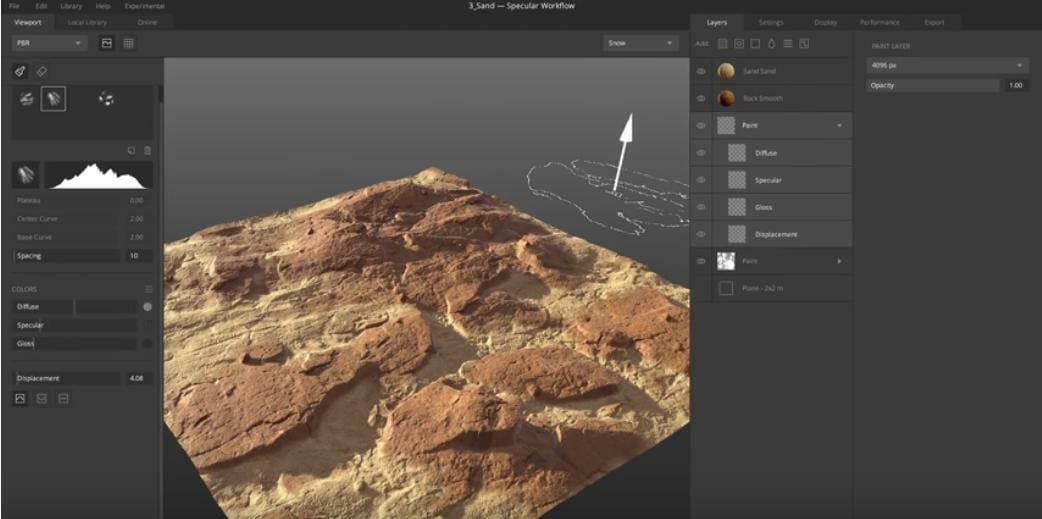
Having introduced texture painting in 2020, Quixel Mixer is an excellent alternative for many 3D texturing and painting projects. The software is considered very intuitive with well-labeled tools, so the interface is generally viewed as more user-friendly (especially for beginners) than Substance 3D Painter. Mixer hooks in well with the MegaScans library and boasts plenty of solid features like 3D mesh painting and a huge material library. Plus, you can paint directly on models.
There’s no baker in Mixer, which is partly why it isn’t necessarily the best option for those looking to find software that’s geared more toward professional use. However, you can theoretically bake maps inside of Mixer, and they can then be exported elsewhere.
While the free version is available if you’ve got a Content License with Unreal Engine, there are different subscription plans depending on the intended purposes and income.
Mixer is fairly competitive software for hobbyists or those looking to get their feet wet in the world of 3D painting before moving on to bigger (and potentially more expensive) things.
- Price: Free (with Unreal Engine); ~$20/month for personal use; ~$120/month for the Indie subscription; Studio plan available upon quote request
- Level: All levels
- Similar tools to SP: Drawing on mesh, vast libraries
- OS: Windows, MacOS
- Where to get it: Quixel
ArmorPaint
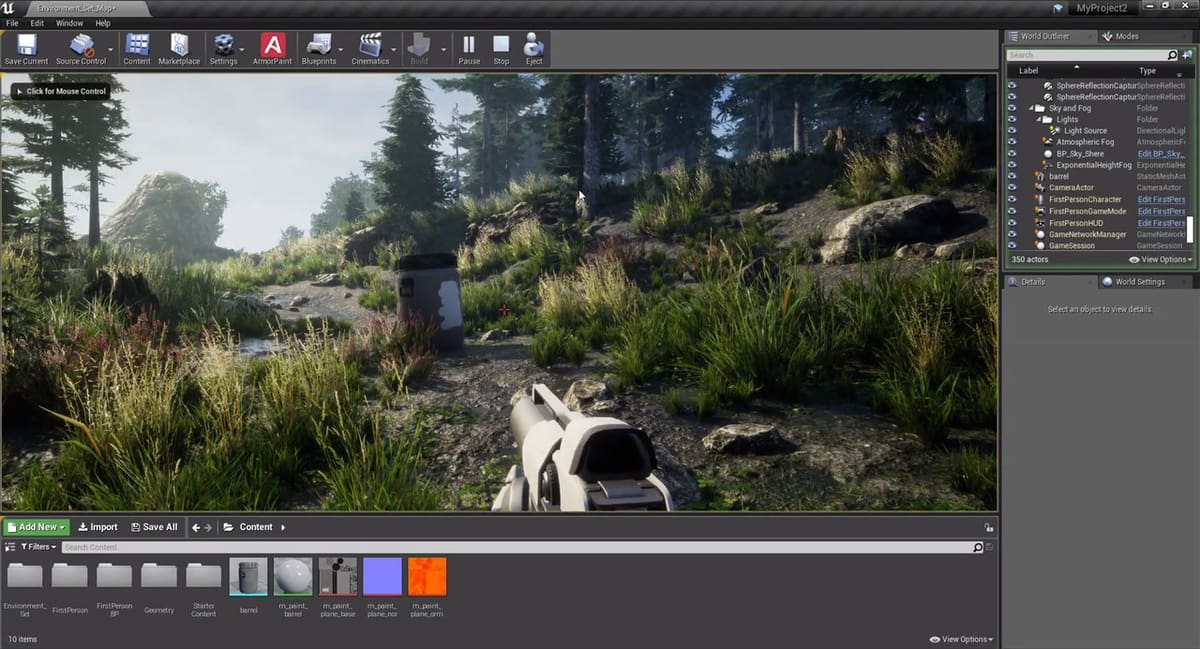
ArmorPaint has much in common with Blender, which we’ll get to later. It’s another fairly solid alternative to Substance 3D Painter and is generally regarded as its primary for-fee competitor software. Users are impressed by ArmorPaint’s vast capabilities, such as its seamless UV painting, procedural texturing, use of node-based brushes, and ease of exporting files. You also receive instant visual feedback on your work in the viewport, and the interface is user-friendly.
ArmorPaint has an excellent support network, and there are plenty of free and paid tutorials available. Overall, it has a very solid reputation in the world of 3D assets and painting, and it’s notably more affordable than Substance 3D Painter. The main downside is it doesn’t have quite the staggering array of features that Painter can brag of, like limited baking; it’s also been known to crash at times, but for the most part, is pretty reliable.
- Price: ~$20 to download including updates
- Level: Intermediate-advanced
- Similar tools to SP: Integration into additional 3D software, layer system, clean interface
- OS: Windows, Linux
- Where to get it: ArmorPaint
ZBrush (Multiple Versions)
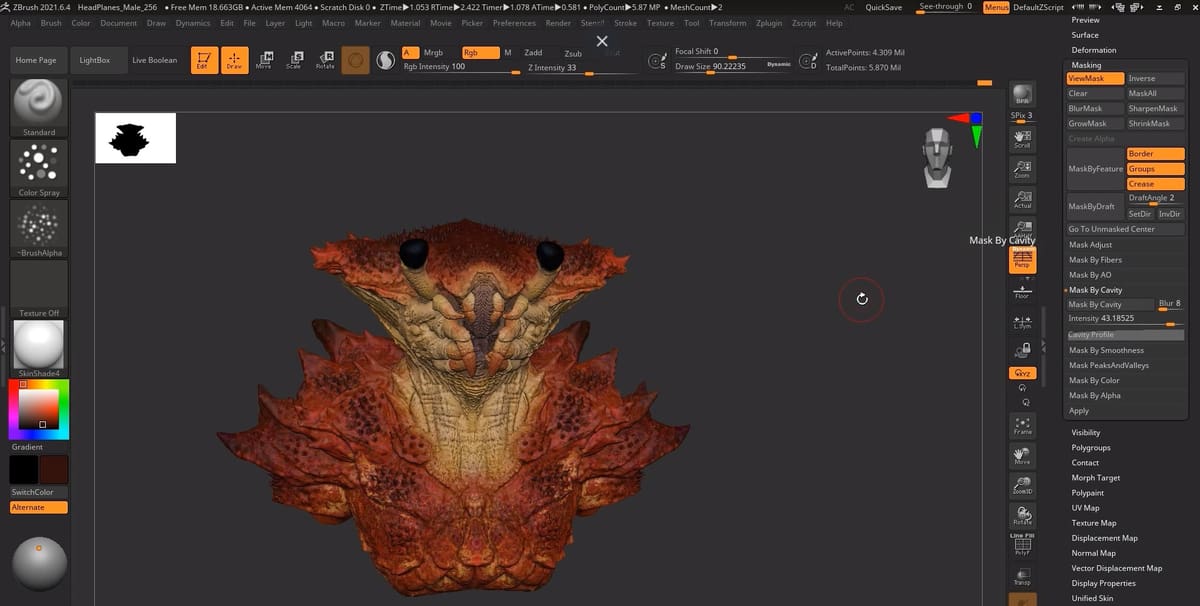
For the advanced user, ZBrush is one of the prime competitors to Substance 3D Painter. In fact, many professionals use both, transferring ZBrush items to Painter for finishing.
The software is considered optimal for high-poly modeling purposes and can proudly tout its phenomenal customer support, as well as its ease in transferring users’ work to other software packages.
ZBrush sports a very powerful system of brushes for finely detailed sculpting, and it’s easy to reduce the poly count with meshes. To paint in ZBrush, you’ll use Polypainting, which allows you to color a 3D model on a “per-vertex” basis (meaning you’re painting on the individual polygons of your mesh).
One obvious downside to ZBrush is its cost if you go with the full version. But depending on your purposes and requirements, you could possibly opt for ZBrushCore, which is less expensive and has fewer features, or even ZBrushCoreMini, which is free with the fewest features. You can’t go wrong with giving the free trial a spin!
- Price: Licenses range from ~$360 annually for the basic ZBrush package up to ~$1,200 annually for the full suite of Maxon digital design that includes animation, simulation, and 3D modeling tools; ZBrushCoreMini is ~$10 per month
- Level: Beginner (ZBrushCore); advanced (ZBrush)
- Similar tools to SP: Direct painting on flattened UV maps, baking
- OS: Windows, MacOS
- Where to get it: ZBrush
Blender
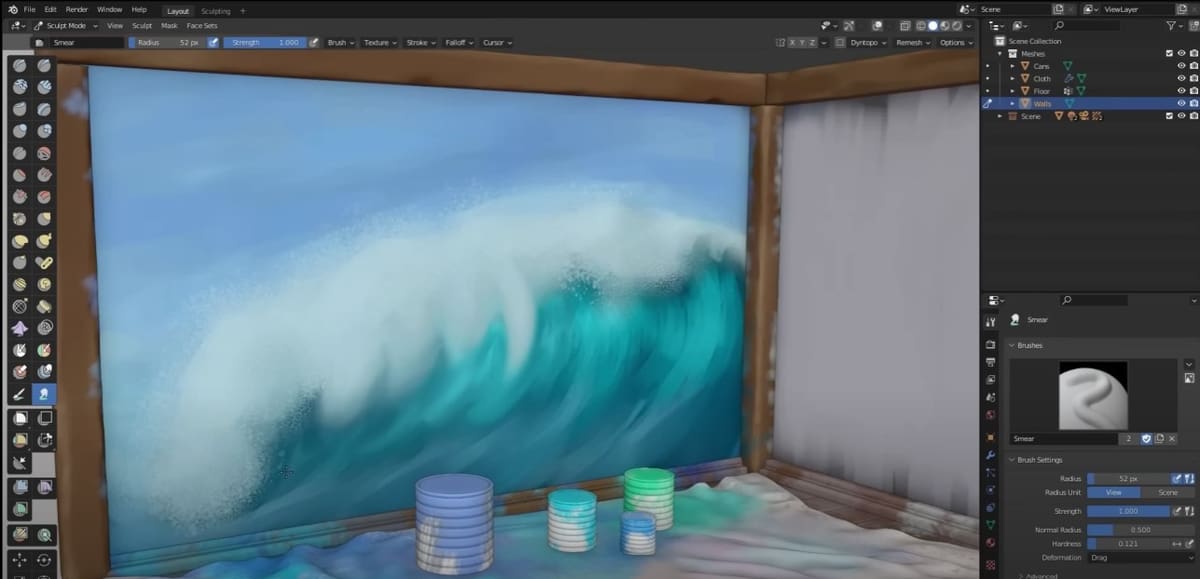
As millions of users in the 3D modeling and animation world already know, Blender is incredible (and free!) software. It boasts a robust community and support network that will allow you, to a certain extent, to do many of the tasks that Substance 3D Painter can do when it comes to things like painting and texturing.
One reason that some users opt for Painter can be the sheer complexity of Blender, so this program is better recommended for more seasoned 3D designers. Baking objects from high-poly to low-poly, for instance, can be more of an endeavor in Blender.
With really powerful rendering tools, excellent post-processing, and animation capabilities, Blender is great for both professional and hobby work. But since Substance 3D Painter sports a really large library of textures, it takes out some of the online searching needed when looking for objects, so Painter might have the upper hand there.
Overall, though, if you’re already experienced with Blender or feel confident enough to master the program, you can use Blender for the majority of tasks that you might otherwise do in Painter. And since Blender doesn’t cost a cent, you won’t have wasted any money if it turns out it’s not what you’re looking for.
- Price: Free
- Level: Intermediate-advanced
- Similar tools to SP: Wide variety of 3D painting and sculpting tools, can do some exporting of textures back and forth with SP
- OS: Windows, MacOS, Linux
- Where to get it: Blender
3DCoat
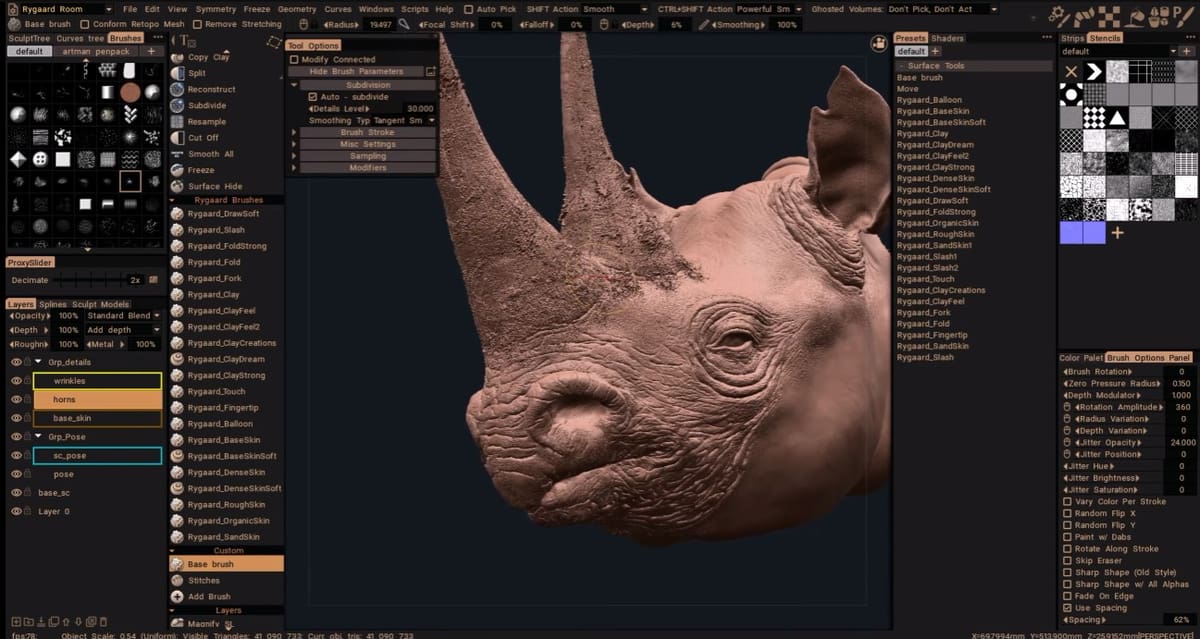
Particularly noteworthy for its interactive UV mapping capabilities and a multitude of well-developed painting tools, 3DCoat is definitely a viable alternative to Substance 3D Painter. It gets high marks for dealing with low-poly models, and what’s often cited as being especially appealing about 3DCoat is its versatility, with features including repotology, UV mapping, sculpting, painting, and PBR texturing. 3DCoat is also generally well regarded when it comes to hand painting. Suffice it to say, this program can pretty much do it all.
Some drawbacks to 3DCoat can be the price; it isn’t one of the cheapest alternatives, though it does offer a free 30-day trial to test it out. Additionally, the least-expensive paid option only allows for painting on seven layers, so you’ll have to upgrade if you want more capabilities there.
However, it’s still an excellent choice. With an active YouTube tutorial channel and a large user community, you’ll be able to get a lot of support for any questions or concerns you might have when using the program.
- Price: Licenses range from ~$20 monthly to ~$380 for a perpetual license
- Level: Intermediate-advanced
- Similar tools to SP: Hand painting capabilities, ease of exporting files, stylized texturing
- OS: Windows, MacOS, Linux
- Where to get it: 3DCoat
Mari
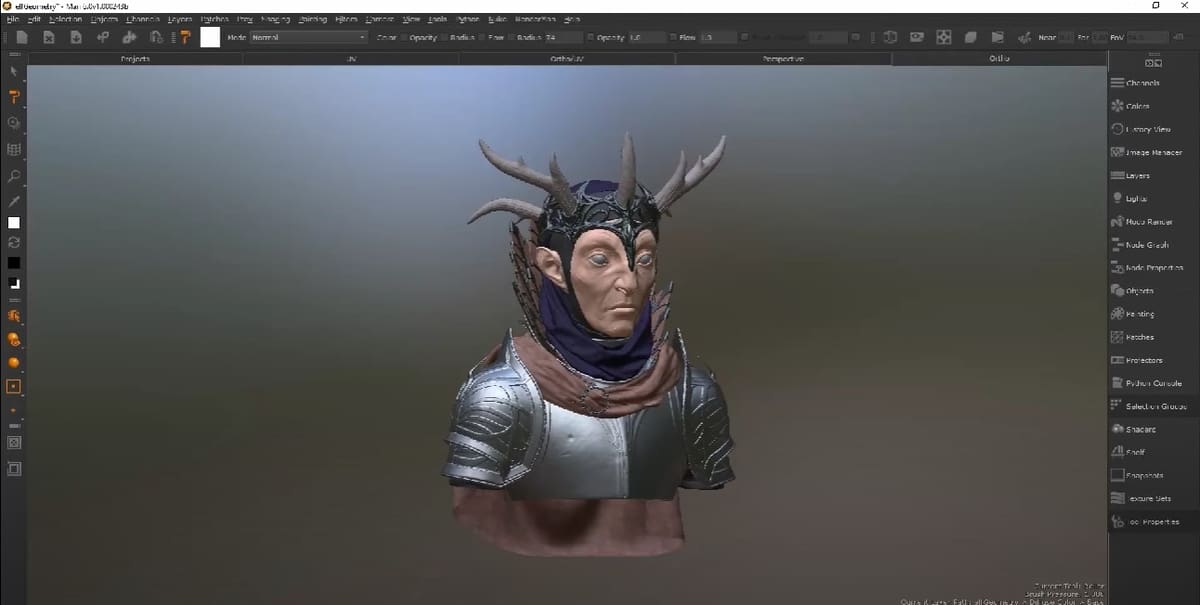
Produced by Foundry, Mari is capable of creating high-resolution texturing for 3D models, so its core value of texturing is similar to Painter. It’s considered an industry standard for VFX and film for good reason; it’s an enormously powerful program.
That said, Mari is extremely elaborate (and possibly even cluttered) in its interface, with many buttons and icons, which may be daunting for those who don’t have advanced or professional experience in texturing. As such, it’s best for users who have quite a bit of experience in the world of 3D assets.
Mari is particularly outstanding for texturing high-poly models for film work, and generally ideal for large texture sets that Painter isn’t really created to deal with. So if you’re looking for a program that has both of those aspects, Mari may be your best bet. Its biggest drawback besides a steep learning curve is the price, but there’s a free non-commercial version available (it has fewer features than the paid version) that’s still excellent quality.
- Price: Non-commercial version is free; ~$660 annually or ~$60 monthly (after 30-day free trial)
- Level: Advanced
- Similar tools to SP: Some overlap with procedural texturing capabilities, such as being able to work with UDIMs as texture sets, and similar levels of texture resolution and detail (though via different toolsets)
- OS: Windows, Linux
- Where to get it: Foundry
PixaFlux
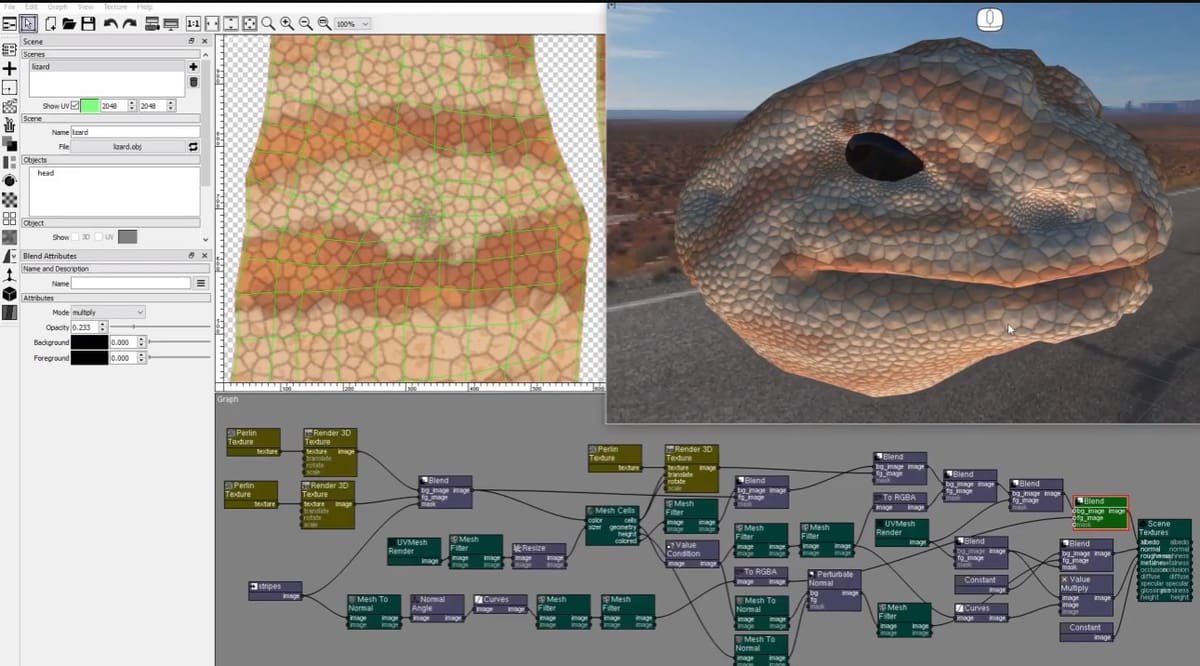
Meant for image manipulation and texture creation, PixaFlux is node-based free software that’s an excellent option for those with extensive prior experience in 3D assets. Its PBR-based workflow is incredibly powerful, with standout features like color correction and PBR texture composition. The software does have more similarities to Substance 3D Designer than to Painter, but there’s still enough in common when it comes to texturing. As a bonus, it’s totally free.
Tutorials and support community are excellent. The only thing to note is that it isn’t the most user-friendly program and interface, so it’s best for experienced users only. PixaFlux is also limited to only the Windows operating system at this time.
- Price: Free
- Level: Advanced
- Similar tools to SP: PBR texturing
- OS: Windows
- Where to get it: PixaFlux
Honorable Mentions
These programs don’t quite fit the profile of Substance 3D Painter and its texturing capabilities, but they still have features that can be helpful for 3D painting or other endeavors in the realm of animation and 3D design.
Mudbox
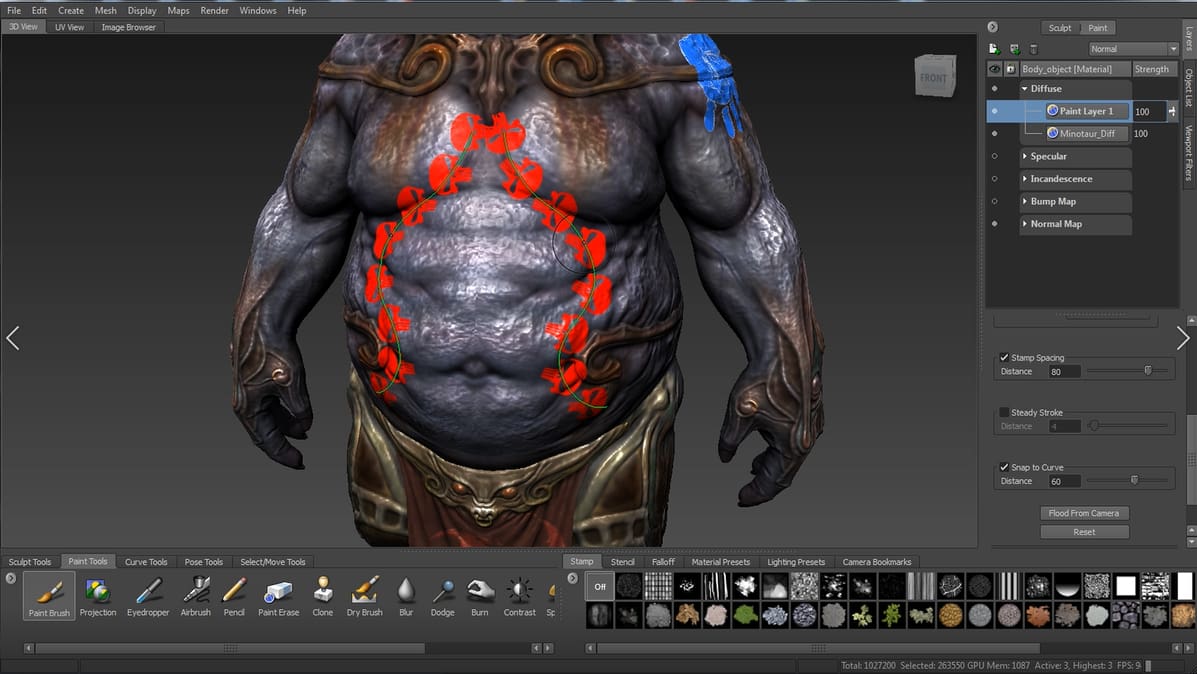
A well-regarded painting and carving program, Mudbox allows users to paint directly on 3D models, manipulate models with a special stylus pen tool, and utilize retopology tools, among many other tasks. Its automated setup makes it very user-friendly.
Created by Autodesk, Mudbox offers a free trial and is a good choice for beginners to get started in the world of 3D painting, texturing, and sculpting. It’s a solid starting point before moving on to Substance 3D Painter or one of its alternatives.
- Price: ~$100 annually, with other term plans available (after a 30-day free trial)
- Level: All levels
- Features: Texture baking, brush-baked workflows, sculpting, painting
- OS: Windows, MacOS
- Where to get it: Autodesk
SVT (Unity)
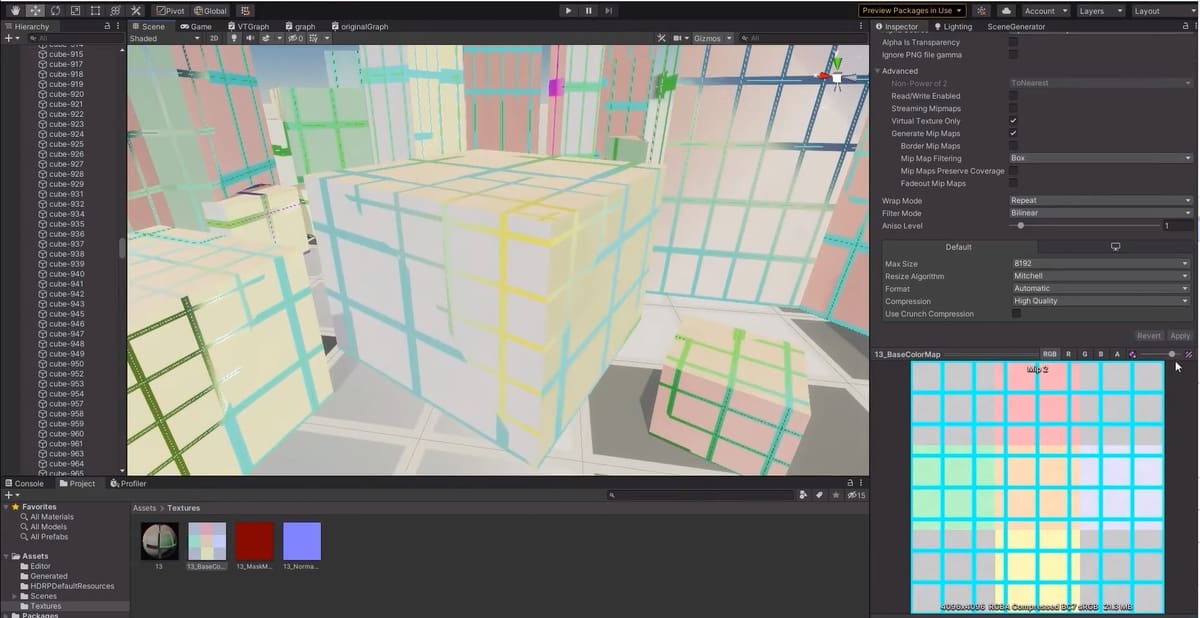
Streaming Virtual Texturing (SVT), once known as Granite SDK, a standalone program for generating digital textures, is now exclusively available by default within the Unity design software. This powerful middleware is great for large scenes and complex objects as a way to reduce memory consumption and boost speed without sacrificing the resolution of the texture.
The secret to SVT is the “virtual texture technology” that only loads visible areas of the texture, rather than loading all of the textures into the RAM, which can bog down performance. Utilized by professional game developers, Unity has all of the texture and painting tools one could ask for and, when combined with SVT, provides a streamlined digital design workflow even when operating with ultra-high resolution.
- Price: A free version of Unity is available for those making under $100,000 in the last 12 months; the standard version of the software starts at ~$400 annually
- Level: Advanced
- Features: Lightweight, high-resolution textures
- OS: Windows, MacOS, Linux
- Where to get it: Unity
Filter Forge
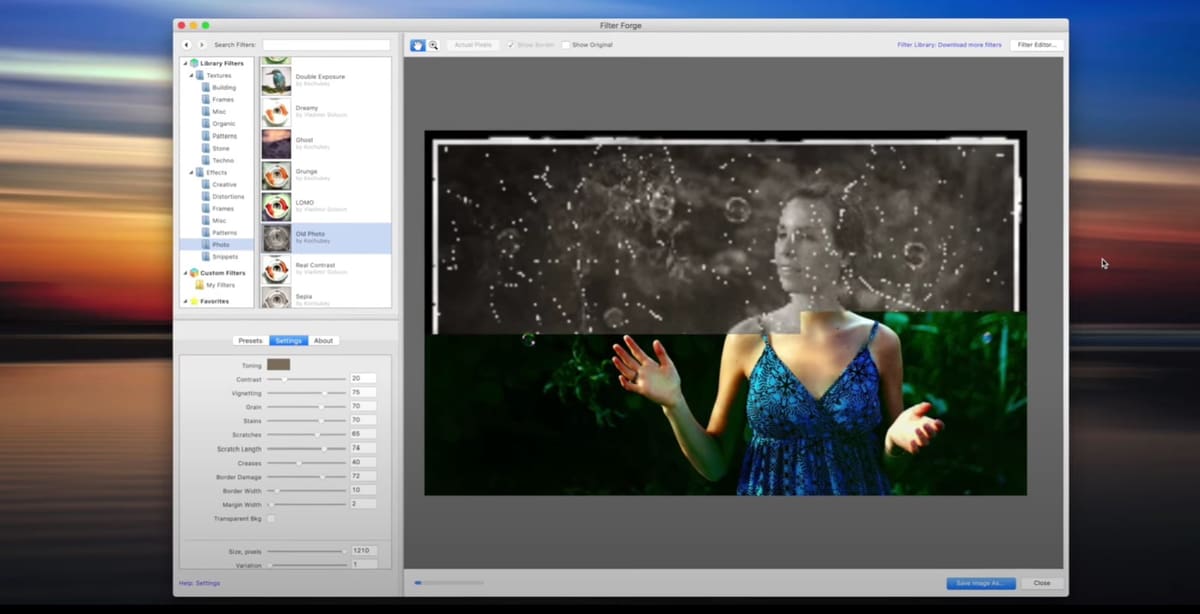
As its name might imply, Filter Forge is graphics software that incorporates a vast array of filters. It features procedural textures and can be used either as a standalone program or as a plug-in for Photoshop.
This software can output maps of texture images and sports an impressive (node-based) filter editor. The extensive filter library is also hard to beat! Filter Forge is a bit expensive but offers a free trial period. It can be an excellent supplementary program for your 3D design and painting work.
- Price: Licenses range from ~$60 (often on discount) for a Basic Edition permanent license up to ~$260 for professional access (after a 30-day free trial)
- Level: All levels
- Features: Image modification, large filter library
- OS: Windows, MacOS
- Where to get it: Filter Forge
License: The text of "Best Substance 3D Painter Alternatives" by All3DP is licensed under a Creative Commons Attribution 4.0 International License.
